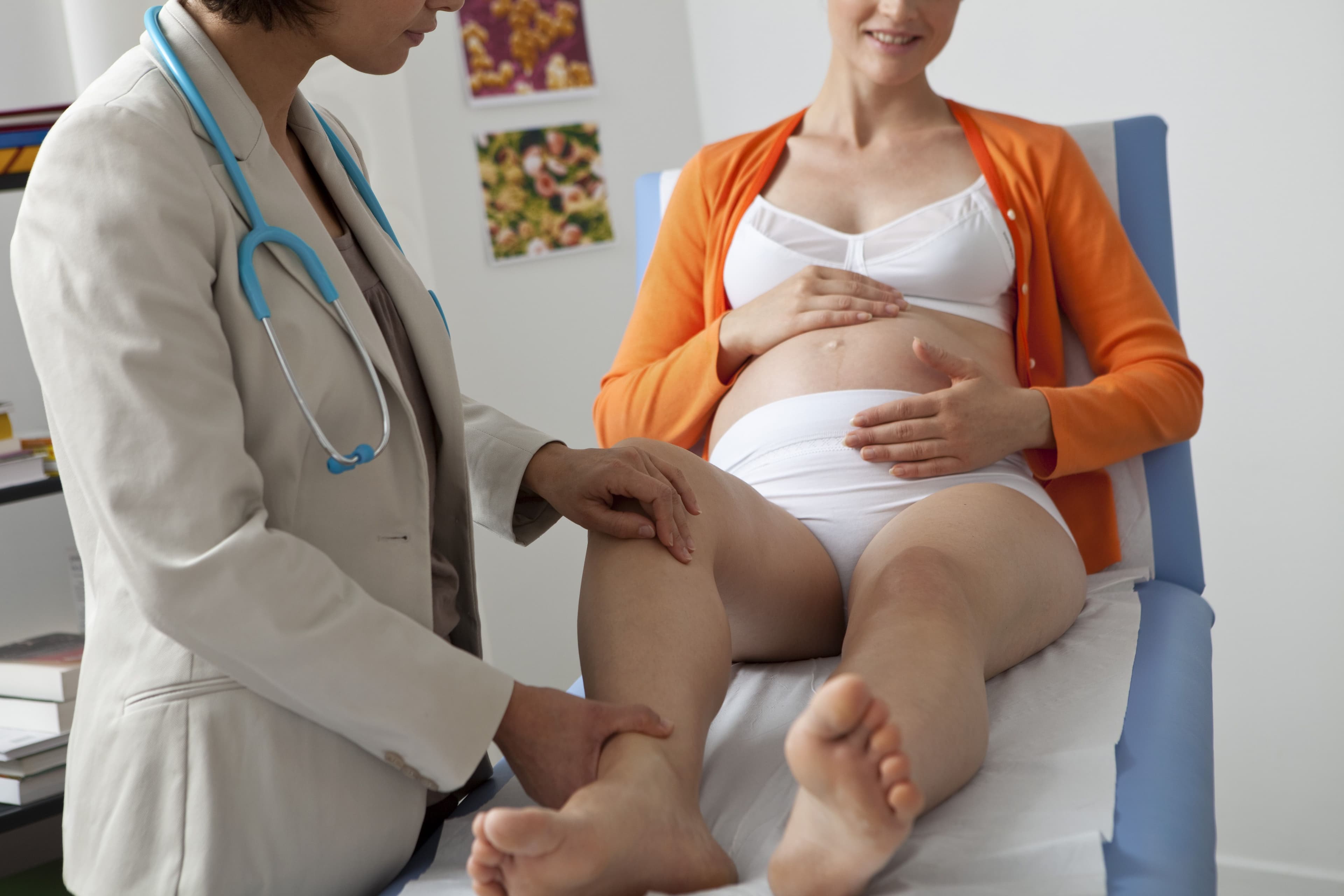Signs of venous insufficiency: who and when should you consult ?
Reminder of the symptoms of venous insufficiency
It is often difficult to know when to consult a doctor when faced with the first clinical signs of venous insufficiency, which can often seem harmless, such as the sensation of heavy legs, the appearance of visible, hard veins, pain and varicose veins. Despite these ‘benign’ symptoms, it is a good idea to consult a health professional to determine your state of health and check that you are not suffering from venous disease.
Chronic venous insufficiency, also known as chronic venous disease, can result from problems with superficial veins, such as varicose veins, or deep veins, such as the after-effects of phlebitis, causing reflux or obstruction that leads to venous hypertension in the ankle (5).
According to the Vein Consult Program survey carried out by the Observatoire du dépistage et de la prise en charge de la maladie veineuse (1), venous insufficiency is inadequately treated, particularly because of its image as a ‘comfort disease’ and the fact that venotonic drugs are no longer reimbursed, although compression is still reimbursed.
How can you recognise a venous problem due to poor blood circulation?
With a lack of tone in the veins, resulting in an inability to properly pump blood from the feet to the heart, venous insufficiency in the lower limbs causes a sensation of heavy legs, often accompanied by tingling, swelling (oedema) and, in more serious cases, varicose veins, venous thrombosis and ulcers. (4) This is a blood circulation problem.
The origin of these various symptoms and unpleasant effects is the venous pump system, which is no longer sufficiently toned to efficiently pump blood from the lower limbs to the heart. This lack of tone leads to blood stagnation in the legs, causing the veins to widen, forming spider veins that can vary in size and colour, from blue to black, and are accompanied by pain of varying intensity. Symptoms such as a feeling of heavy legs or swelling of the lower limbs generally intensify at the end of the day or in hot weather. It is essential to take the signs of venous insufficiency seriously and to treat them carefully. (4)
Who should you consult if you have problems with venous insufficiency?
Ask your GP
Your GP should be the first person to consult about symptoms such as pain, the sensation of heavy legs or the appearance of varicose veins. He or she will assess the situation and refer you to a specialist if necessary, after a general examination and an assessment of symptoms to judge the severity of your case, and whether or not you are suffering from venous insufficiency. The doctor's prescription is required for additional tests to be covered by health insurance. (2)
See a specialist: the vascular doctor
In the event of complications, a doctor specialising in diseases of the vessels (angiologist) or veins (phlebologist) is essential to carry out in-depth tests such as Doppler ultrasound, which measures the severity of venous insufficiency. Whether in hospital or private practice, this specialist carries out clinical diagnoses and functional explorations before any technical medical intervention. He treats phlebitis and varicose veins using methods such as sclerotherapy(3).
Contact other sources of information
Pharmacists and orthopaedic surgeons are also valuable resources, available to advise and supply suitable devices such as compression stockings, whether prescribed or not. They also stock other products such as veinotonics, creams and supplements to treat venous insufficiency.
Thanks to their experience, patient associations are a mine of information and practical advice. In France, the ‘maladie veineuse’ association is the reference for those suffering from venous insufficiency (2).
The special case of pregnancy
In specific cases, such as when venous insufficiency is linked to pregnancy or contraceptive use, it is preferable to consult a gynaecologist or midwife.(2) Hormonal variations during pregnancy dilate the veins, and this phenomenon increases with each new pregnancy.
What treatment is available for venous problems?
Compression to combat venous insufficiency
Wearing compression stockings is one of the treatments for venous insufficiency, helping to prevent venous thrombosis. Wearing compression stockings improves venous return from the calf to the heart, and prevents the veins from dilating.
To find out more, read our article on venous insufficiency.
- Société Française de Phlébologie, Guex J.-J. ; Allaert F.A. Observatoire du dépistage et de la prise en charge de la maladie veineuse en médecine générale , 2012 65-2, p.57-66
- Article ‘Faced with a suspicion of venous insufficiency, when to consult?’ published on 9 May 2016 by Nathaly Mermet, scientific and medical journalist
- National Professional Council for Vascular Medicine (CNPMV). (2015). Vascular Medicine: 2015 Review. Accessed on 4 April 2024, at https://www.portailvasculaire.fr/sites/default/files/docs/livre_blanc_2015.pdf
- Article ‘L'insuffisance veineuse, ou “maladie veineuse”, n'est pas une fatalité!’ published on 25 April 2016 by Nathaly Mermet, scientific and medical journalist.
- Debure, C. (2015). Venous compression in venous insufficiency. Annales de Dermatologie et de Vénéréologie (Print), 142(8 9), 469 475. https://doi.org/10.1016/j.annder.2015.06.014


